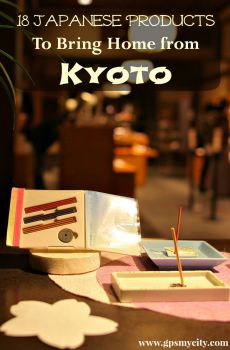
18 Japanese Products To Bring Home from Kyoto
The old capital of Japan, the city of Kyoto has once again been the talk of the world lately, thanks to the bestselling "Memoirs of a Geisha" book and the namesake Hollywood blockbuster movie. Renowned for its impeccable craftsmanship, Japan has so much to amaze a foreign eye with. Many of these things originated in Kyoto, the showroom of the old-time Japan as it was. Listed here are some of the most prominent Kyoto-made items well worth checking out as a memorable gift from the Land of the Rising Sun.
(To visit the venues mentioned in this article, check out these Self-Guided Walking Tours in Kyoto)
1. Kyo Yaki and Kyomizu Yaki
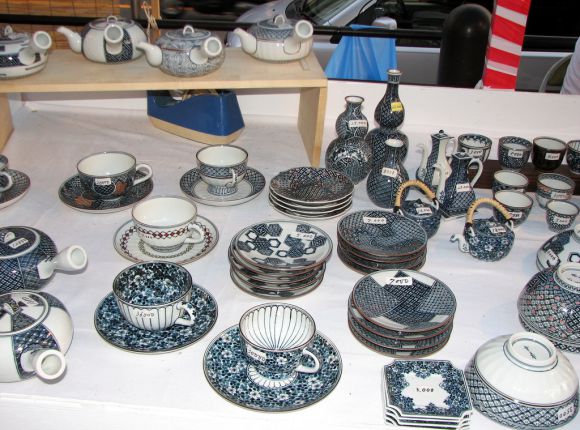
Image Courtesy of: Chris Gladis
The pottery/porcelain made in Kyoto is called Kyo Yaki and Kyomizu Yaki. The origins of Kyoto pottery can be traced to the 5th century in the area around Kyomizu-dera temple in the Higashiyama hills in the eastern part of Kyoto. In the Muromachi Period (the 14th century) a new technology was imported from China and colors were added to the pottery. A few years later, overglazing techniques were introduced. In the late Edo Period, potters shifted from earthenware to Chinese-style porcelain. Nowadays, Kyoto pottery can be found in a wide variety of tableware, tea utensils, and ornamental objects that come in elegant shapes, graceful design, and pure, intense colors.
A good place to buy Kyo Yaki and Kyomizu Yaki is the Kyoto Handicraft Center. All kinds of traditional handicrafts can be found here and more, everything you buy there is duty-free.
A good place to buy Kyo Yaki and Kyomizu Yaki is the Kyoto Handicraft Center. All kinds of traditional handicrafts can be found here and more, everything you buy there is duty-free.
Where to find it:
Kyoto Handicraft CenterAddress: 17 Shogoin Entomicho, Sakyo Ward, Kyoto, 606-8323, Japan
Opening hours: 10:00–19:00
Phone: +81 75-761-8001
Website: http://www.kyotohandicraftcenter.com/
E-mail: information@kyotohandicraftcenter.com
Buy It on Amazon:
Offline reading and travel directions:
With GPSmyCity App you can read this article offline on your mobile device, use the embedded offline city map and GPS navigation, as well as create a self-guided walk to visit the venues featured in the article.
2. Yatsuhashi
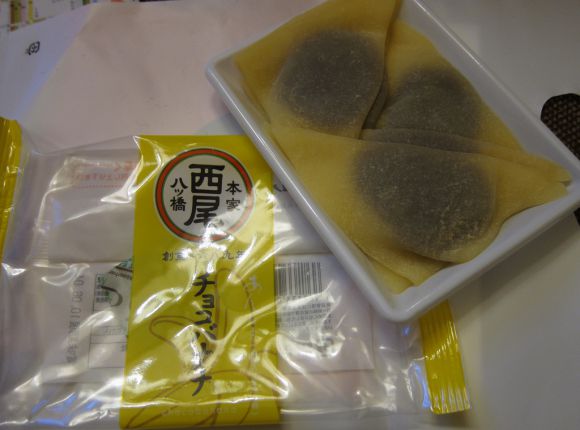
Image Courtesy of: hslo
Yatsuhashi, which means 'eight bridges', is a Japanese confectionery sold mainly as a souvenir sweet. It is one of the best known meibutsu (famous regional products) of Kyoto, made with bean paste, and similar to mochi in texture. They come in two basic forms: nama or 'raw' yatsuhashi which are soft, and yaki yatsuhashi which are hard and cookie-like. Yatsuhashi have many different flavors like orange, strawberry, macha (green tea), peach and others. Baked yatsuhashi may keep up to three months, while raw ones only for a week.
Yatsuhashi can be tasted and bought from Yatsuhashi-an & Shisyu-yakata. Here you also have the possibility to try and make your own sweet creations. Other shops were you can get Yatsuhashi are Toraya and Kogetsu. A pack of Yatsuhashi is ¥250 (about $4).
Yatsuhashi can be tasted and bought from Yatsuhashi-an & Shisyu-yakata. Here you also have the possibility to try and make your own sweet creations. Other shops were you can get Yatsuhashi are Toraya and Kogetsu. A pack of Yatsuhashi is ¥250 (about $4).
Where to find it:
Yatsuhashi-an & Shisyu-yakataAddress: 36 Nishikyougoku Nishikoromode-cho, Ukyo-ku, Kyoto, Japan
Operation Hours: Monday-Sunday: 9:00-17:00
Phone: +81 75-313-2151
Website: http://sisyu.yatuhasian.jp/
E-mail: info@yatuhasian.jp
Toraya
Address: Japan, 〒605-0802 Kyoto, Higashiyama Ward
Operation Hours: Monday-Sunday: 10:00-17:30
Phone: +81 75-221-3027
Website: http://www.toraya-group.co.jp/
Kogetsu
Address: Shimogyo Ward, Shincho, 52
Operation Hours: Monday-Sunday: 10:00-20:00
Phone: +81 75-533-6133
Website: http://www.kogetsu.com/
Buy It on Amazon:
Offline reading and travel directions:
With GPSmyCity App you can read this article offline on your mobile device, use the embedded offline city map and GPS navigation, as well as create a self-guided walk to visit the venues featured in the article.
3. Kimekomi Dolls

Image Courtesy of: solarka
The first Kimekomi dolls were created in 1736 in Kyoto and were called Kamo-ningyou because they were made at the Kami Kamo shrine. The first to make Kimekomi dolls was Takahashi Tadashige. The dolls are made of wood, wood compo, or (in some modern dolls) plastic foam and have narrow grooves carved on the doll's body. Different designs, using cloth scraps, are applied; the cloth is glued and its edges are tucked in the grooves. The head and hands (if any) of the doll are finished with gofun. The hair may be a part of the head or a separate wig. The dolls may represent different characters and are dressed in antique kimonos.
You can buy Kimekomi dolls at the Kyoto Handicraft Center, or even try and make one of your own and then take it home. The address of the Center is 21 Entomi-cho Shogo-in Sakyo-ku, Kyoto. You can also try the Ashida and Nakayama shop or Kurochiku for a larger selection. Kimekomi dolls prices range from $70 to $600 and more.
You can buy Kimekomi dolls at the Kyoto Handicraft Center, or even try and make one of your own and then take it home. The address of the Center is 21 Entomi-cho Shogo-in Sakyo-ku, Kyoto. You can also try the Ashida and Nakayama shop or Kurochiku for a larger selection. Kimekomi dolls prices range from $70 to $600 and more.
Where to find it:
Kyoto Handicraft CenterAddress: 21 Entomi-cho Shogo-in Sakyo-ku, Kyoto, Japan
Operation Hours: 10:00–19:00
Phone: +81 75-761-8001
Website: http://www.kyotohandicraftcenter.com/
E-mail: information@kyotohandicraftcenter.com
Ashida and Nakayama doll shop
Address: 334 Minami Yaoyacho, Shimougyo-ku, Kyoto City
Phone: +81 75-371-0980
Website: http://www.nakayamadoll.com/
E-mail: office@nakayamadoll.com
Kurochiku
Address: 380 Mukadeyacho, Shinmachi-dori, Nakagyo-ku, Kyoto, Japan
Operation Hours: Monday-Friday: 10:00-18:00
Phone: +81 75-256-5000
Website: http://www.kurochiku.co.jp/
Offline reading and travel directions:
With GPSmyCity App you can read this article offline on your mobile device, use the embedded offline city map and GPS navigation, as well as create a self-guided walk to visit the venues featured in the article.
4. Nishijin Traditional Textiles
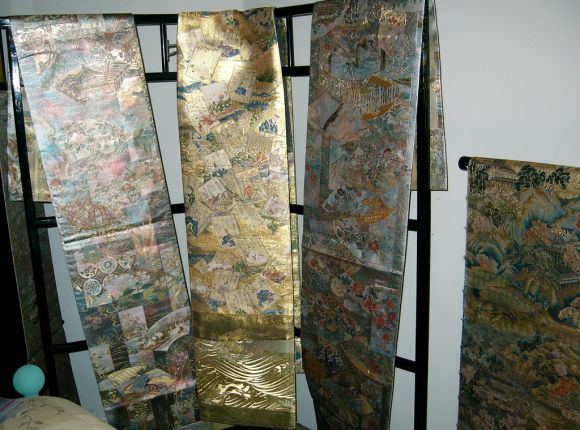
Image Courtesy of: santapaws4xmas
Nishijin weaving was created approximately 1200 years ago in Kyoto. After Kyoto became the capital in 794, productivity of Nishijin increased in order to provide the Imperial court and aristocracy with the needed materials. Then the need for materials began to decrease reducing productivity. In the Muromachi Period, the production of Nishijin textiles was at a minimum due to war and the demolition of almost the entire city of Kyoto. After the war, the production increased again; now the weavers provided materials to both the Imperial court and the samurai lords. In the 19th century, because of unproductive crops and the change of capital to Tokyo, there was a sudden stop in Nishijin trade, but thanks to new technology, it is now once again flourishing. Nowadays, there are many types of articles produced through Nishijin weaving, such as kimono, kimono sashes, ties, belts, woven small goods, items for decorating the home and many different types of cloths.
You can find out more about Nishijin Traditional Textiles from the Nishijin Textile Center. Also there you can see weaving demonstrations and certainly purchase items. There you may try on the ceremonial kimonos once worn by court ladies and have your picture taken. Nishijin Textiles can also be bought at the Kyoto Handicraft Center.
You can find out more about Nishijin Traditional Textiles from the Nishijin Textile Center. Also there you can see weaving demonstrations and certainly purchase items. There you may try on the ceremonial kimonos once worn by court ladies and have your picture taken. Nishijin Textiles can also be bought at the Kyoto Handicraft Center.
Where to find it:
Nishijin Textile CenterAddress: 414 Tatemonzencho, Kamigyo Ward, Kyoto, 602-8216, Japan
Operation Hours: Tuesday - Sunday: 10 am - 4 pm
Phone: +81 75-451-9231
Website: http://www.nishijin.or.jp/
E-mail: info@nishijin.jp
Kyoto Handicraft Center
Address: 17 Entomi-cho Shogo-in Sakyo-ku, Kyoto, Japan
Operation Hours: Daily: 10:00-19:00
Phone: +81 75-761-8001
Website: http://www.kyotohandicraftcenter.com/
E-mail: information@kyotohandicraftcenter.com
Buy It on Amazon:
5. Kyo-shikki (Kyoto Lacquerware)
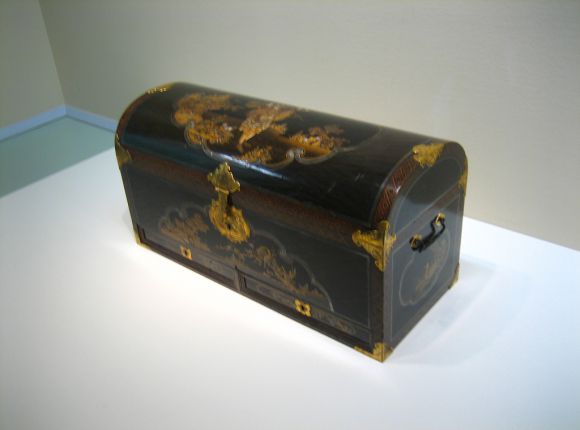.jpg)
Image Courtesy of: Iwan Gabovitch
Shikki (lacquerware) is a hallmark craft of Japan. Lacquerware has been an art for Japanese tableware for a very long time. Nowadays, it is no longer used for household and is more of a luxury item. Kyoto lacquerware is known as Kyo-shikki and its history is closely related to the tea ceremonies. Kyoto is recognized as the center of the lacquer industry, because Kyo-shikki has a high quality and is elegant, sophisticated in design and simply beautiful. There is a wide variety of boxes and dining ware, as well as decorations made from lacquer.
Zohiko deals with Kyo-shikki for over 300 years; in the 18th century the president of the company was given the title of “special artist of gold decoration” by the emperor. The store has a wide selection of fine kyo-shikki. Kyo-shikki may also be found at the Kyoto Handicraft Center or at Isuke. Prices for Kyo-shikki are between ¥1,000 ($12) and ¥40,000 ($490).
Zohiko deals with Kyo-shikki for over 300 years; in the 18th century the president of the company was given the title of “special artist of gold decoration” by the emperor. The store has a wide selection of fine kyo-shikki. Kyo-shikki may also be found at the Kyoto Handicraft Center or at Isuke. Prices for Kyo-shikki are between ¥1,000 ($12) and ¥40,000 ($490).
Where to find it:
ZohikoAddress: 719ー1 Yohojimaecho, Nakagyo Ward, Kyoto, 604-0916, Japan
Opening hours: 10:00-18:00; Closed on Wednesday
Phone: +81 75-752-7777
Website: http://www.zohiko.co.jp/
Kyoto Handicraft Center
Address: 17 Entomi-cho Shogo-in Sakyo-ku, Kyoto, Japan
Opening hours: 10:00–19:00
Phone: +81 75-761-8001
Website: http://www.kyotohandicraftcenter.com/
E-mail: information@kyotohandicraftcenter.com
Isuke
Address: 344 Kashiwaya-cho, Yanaginobanba Gojiyo agaru, Shimogyoku, Kyoto, Japan
Opening hours: Monday - Friday: 9:00-17:00
Phone: +81 75-361-5281
Website: http://www.isuke.co.jp/
E-mail: shikki@isuke.co.jp
6. Fushimi Sake
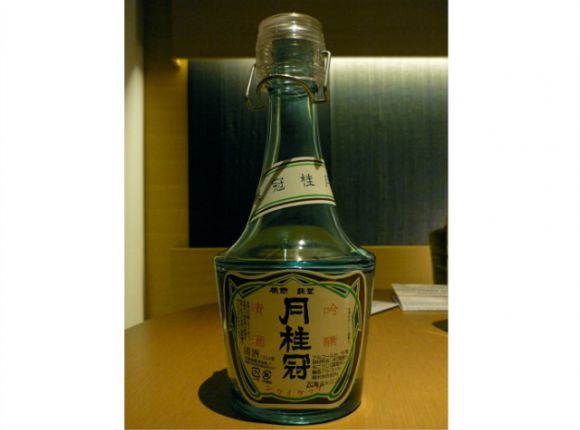
Image Courtesy of: A Mitchell
Sake has been brewed in Japan for a very long time (since around the 3rd or 2nd century BC). Approximately at the same time began the paddy rice cultivation. Besides rice, water is necessary to make Japanese sake and the Fushimi area has plenty of pure spring water. It is thanks to the high quality of water that the sake brewed in Fushimi is so delicious. The sake from Fushimi has a sweet mellow taste and, because of these characteristics, it is called “onna-sake” (woman sake), as opposed to the dry sake produced in Nada that is called “otoko-sake” (man sake). There are more than 20 sake breweries in Fushimi, including the well-known brands Gekkeikan and Kizakura.
The Gekkeikan Okura Sake Museum is a good place to learn about the history of sake brewing and to taste sake. The museum is located in Fushimi ward in an old sake brewery. After you make the tour of the museum, you can browse the sake selection at the museum's shop. Some of the sake varieties in the shop are available only there. Different varieties of locally made sake can also be bought in the shops located on the Otesuji street, the largest of four shopping streets in Fushimi.
The Gekkeikan Okura Sake Museum is a good place to learn about the history of sake brewing and to taste sake. The museum is located in Fushimi ward in an old sake brewery. After you make the tour of the museum, you can browse the sake selection at the museum's shop. Some of the sake varieties in the shop are available only there. Different varieties of locally made sake can also be bought in the shops located on the Otesuji street, the largest of four shopping streets in Fushimi.
Where to find it:
Gekkeikan Okura Sake MuseumAddress: 247 Minamihama-cho, Fushimi-ku, Kyoto, Japan
Operation Hours: Monday-Sunday: 9:30-16:30
Phone: +81 75-623-2056
Website: http://www.gekkeikan.co.jp/
E-mail: customer@gekkeikan.co.jp
Otesuji shopping street
Address: Otesuji, Fuhimi-ku, Kyoto, Japan
Website: http://otesuji.jp/
7. Shoyeido Incense
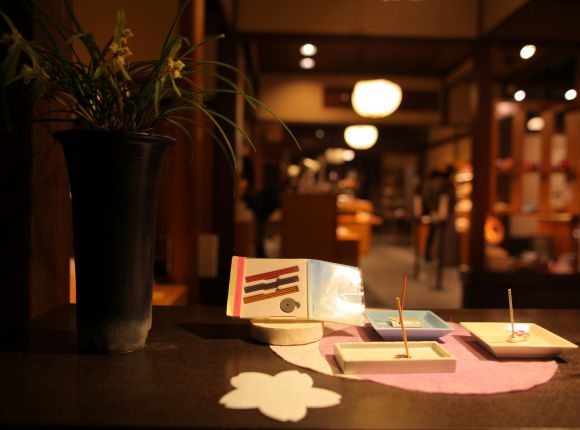
Image Courtesy of: Hiro - Kokoro☆Photo
According to the legend, about 1400 years ago a piece of fragrant wood drifted ashore the Japanese island of Awaji. The locals realized the unique fragrance coming from the wood and made it a present to empress Suiko. This is how the history of fragrance making began. The first incense available to the masses was made here in the early 18th century by Rokubei Moritsune Hata. Twelve generations later, the incense produced by Shoyeido is considered the most natural in the world and is preferred by most temples in Japan. The unique blends made by Shoyeido are the modern natural solution to create a fragrant natural atmosphere in homes and not only. In imperial Kyoto, if you were from the privileged classes, your scent was as much your trademark as your garments. Nowadays, there are many different aromas of Shoyeido incense that come in different forms.
You can find Shoeido incense at the company's main store in the center of Kyoto. Besides browsing their considerable array of incense and related items, you can also experience an incense ceremony. You can also visit their Sanneizaka store. Shoyeido incense prices are from $3 upwards.
You can find Shoeido incense at the company's main store in the center of Kyoto. Besides browsing their considerable array of incense and related items, you can also experience an incense ceremony. You can also visit their Sanneizaka store. Shoyeido incense prices are from $3 upwards.
Where to find it:
Shoyeido Main StoreAddress: Karasuma Nijo Nakagyo-ku, Kyoto, Japan
Operation Hours: Monday-Sunday: 9:00‒18:00
Phone: +81 75-212-5590
Website: http://www.shoyeido.co.jp/
Shoyeido Sanneizaka Store
Address: 3-334 Seiryuen, Kiyomizu, Higashiyama-ku, Kyoto, Japan
Phone: +81 75-532-5590
Website: http://www.shoyeido.co.jp/
Buy It on Amazon:
8. Kyo Sensu (Folding Fan)
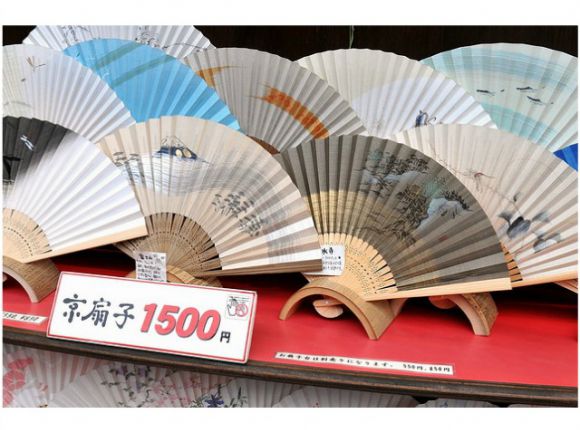.jpg)
Image Courtesy of: max teo
The first Kyo-sensu were created more than 1000 years ago and has since been employed in a number of ways, changing to suit the times, and sought after by all manner of people. Sensu are used on formal occasions, for example, in certain ceremonies and at special events. Many visitors to Kyoto, regardless of age and sex, buy sensu as souvenirs. There are different types of Kyo-sensu used on different occasions, such as tea ceremonies, Japanese traditional dances or simply for decoration. They are made either from thin slats of cypress wood, stitched together with silk thread, or from washi paper. Sensu are also very practical as an accessory and suit both Japanese and Western style of clothing. A lot of women carry sensu, not only as a means of keeping cool, but also because they add to the feminine appeal of the user.
For beautiful handmade Kyo-sensu, visit Ohnishi Tsune Shoten. All their sensu have been handmade by skilled craftspeople in the back of the shop. The sensu available at this shop cannot be found anywhere else. Their sensu start with ¥2000 ($25) and the nicest ones are over ¥5000 ($62). You can also buy Kyo-sensu at the Kyoto Handicraft Center.
For beautiful handmade Kyo-sensu, visit Ohnishi Tsune Shoten. All their sensu have been handmade by skilled craftspeople in the back of the shop. The sensu available at this shop cannot be found anywhere else. Their sensu start with ¥2000 ($25) and the nicest ones are over ¥5000 ($62). You can also buy Kyo-sensu at the Kyoto Handicraft Center.
Where to find it:
Ohnishi Tsune ShotenAddress: 23 Hontorocho, Takakura-nishiiru, Matsubara-dori, Shimogyo, Kyoto, Japan
Operation Hours: Monday-Saturday: 10:00-18:00; Closed on Sunday and National Holidays
Phone: +81 75-351-1156
Website: http://www.ohnishitune.com/
Kyoto Handicraft Center
Address: 17 Entomi-cho Shogo-in Sakyo-ku, Kyoto, Japan
Opening hours: 10:00–19:00
Phone: +81 75-761-8001
Website: http://www.kyotohandicraftcenter.com/
E-mail: information@kyotohandicraftcenter.com
Hakuchikudo
Address: 448 Shirakabe-cho, Rokkaku Agaru, Fuyacho-Dori, Nakagyo-ku, Kyoto, Japan
Opening hours: Monday, Tuesday; Thursday-Sunday: 10:00-18:00
Phone: +81 75-221-1341
Website: http://www.hakuchikudo.co.jp/
Buy It on Amazon:
9. Uji-cha
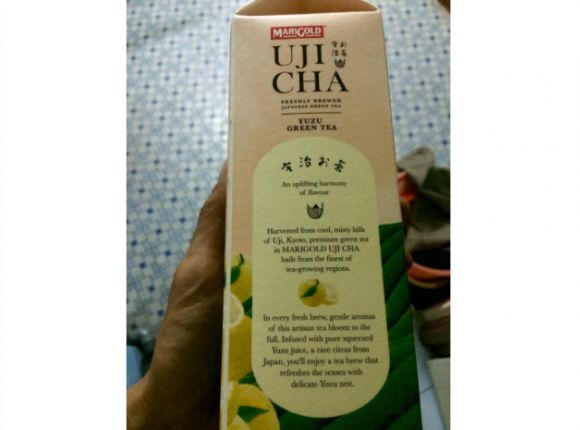
Image Courtesy of: Jimmy Tan
Uji-cha is a rich and aromatic loose green tea originating from Uji, a city on the southern outskirts of Kyoto. It is said that the history of tea in Japan began with master Zen Eisai who brought tea seeds to Kyoto from a trip to China. He shared some of the seeds he brought with the High Priest Myoe of Kozanji Temple at Toganoo. It was Myoe who chose Uji to grow tea trees and manufacture tea. After several innovations in the production of Uji-cha, it became nationwide known and Uji became the most important region of green tea manufacture.
Some of the best Uji-cha in Kyoto is sold at Ippodo. The shop owners encourage customers to taste the tea before buying it. They can do so at the Kaboku Tearoom, which belongs to the shop. Here one can find the highest class of Uji-cha, such as Matcha and Gyokuro. Another place for buying high quality green tea is Marukyu Koyamaen. Prices for Uji-cha are between $10 and $150.
Some of the best Uji-cha in Kyoto is sold at Ippodo. The shop owners encourage customers to taste the tea before buying it. They can do so at the Kaboku Tearoom, which belongs to the shop. Here one can find the highest class of Uji-cha, such as Matcha and Gyokuro. Another place for buying high quality green tea is Marukyu Koyamaen. Prices for Uji-cha are between $10 and $150.
Where to find it:
IppodoAddress: 52 Tokiwagi-cho, Teramachi Nijo-agaru, Nakagyo-ku, Kyoto, Japan
Opening hours: Daily: 10:00-17:00
Phone: +81 75-211-3421
Website: http://www.ippodo-tea.co.jp/
Kaboku Tearoom
Address: 52 Tokiwagi-cho, Teramachi Nijo-agaru, Nakagyo-ku, Kyoto, Japan
Opening hours: Daily: 10:00-17:00
Phone: +81 75-211-3421
Website: http://www.ippodo-tea.co.jp/
Marukyu Koyamaen
Address: 86 Terauchi, Ogura-cho, Uji-shi, Kyoto, Japan
Opening hours: 9:00-17:00
Phone: +81 77-420-0909
Website: http://www.marukyu-koyamaen.co.jp/
Buy It on Amazon:
10. Yojiya Traditional Cosmetics
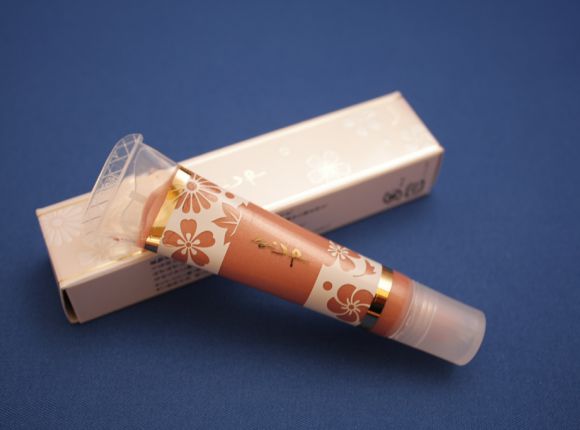
Image Courtesy of: Littlemeow
Yojiya was founded in 1904 in Kyoto. It all began with a cart from which cosmetic products were sold. Then the founder opened a store in the center of the city and called it Kunieda-shoten. Later, the store was relocated to one of the busiest quarters of the city - Shinkyogoku, and the name was changed to Yojiya. This name was previously used as a nickname for the store and it derived from the toothbrushes that were once sold there. Over time, the business grew more and more popular and extended to several stores in Kyoto and all the major airports throughout Japan. The beauty products made by Yojiya are all made of materials from Kyoto. The most popular and the top sold product from Yojiya is their Aburatorigami (oil-blotting facial paper). Aburatorigami absorbs the excess facial oil and allows a smoother application of cosmetics. Besides oil-blotting paper, they also produce lipstick blotting paper, facial brushes, sponges, soaps, cleaning powders, mirrors and a lot more.
The main Yojiya store has a wide assortment of cosmetic products and was well known to people from Kyoto since its founding. Another nice store is located almost at the heart of the Gion district, the most sophisticated area for traditional entertainment in Kyoto. You may also visit the Yojiya store. Yojiya beauty products cost between ¥260 ($4) and ¥9,000 ($110).
The main Yojiya store has a wide assortment of cosmetic products and was well known to people from Kyoto since its founding. Another nice store is located almost at the heart of the Gion district, the most sophisticated area for traditional entertainment in Kyoto. You may also visit the Yojiya store. Yojiya beauty products cost between ¥260 ($4) and ¥9,000 ($110).
Where to find it:
Yojiya Main StoreAddress: Kyoto Station Building, Higashishiokoji Kamadonocho, Shimogyo Ward, Kyoto, 600-8215, Japan
Operation Hours: Monday-Sunday: 10:00-19:00
Phone: +81 75-221-4626
Website: http://www.yojiya.co.jp/
Yojia Gion
Address: 270-11 Gionmachi Kitagawa, Higashiyama Ward, Kyoto, Japan
Operation Hours: Monday-Friday: 10:30-18:30; Saturday, Sunday: 10:30-19:00
Phone: +81 75-541-0177
Website: http://www.yojiya.co.jp/
Yojiya Daimaru
Address: 1F Daimaru Kyoto, 79 Shijo Takakura, Nakagyo-ku, Kyoto, Japan
Operation Hours: 10:00-20:00 (closing days depend on the schedule of Daimaru)
Phone: +81 75-221-2328
Website: http://www.yojiya.co.jp/
11. Kyotsukemono

Image Courtesy of: Vegan Feast Catering
Tsukemono are pickled vegetables from Japan; Kyotsukemono are pickles produced in Kyoto. There are three main kinds of tsukemono in Kyoto: suguki, made of suigukina (a kind of turnip); shibazuke, made of myouga (a kind of ginger), shiso (perilla) and kamonasu (a kind of eggplant grown in Kamigamo in Kyoto); and senmaizuke, made of shogoinkabura (the biggest type of turnip grown in Shogoin in Kyoto). Tsukemono is a common food in Japan served in many places. Japanese people began preserving food by salting it at a very early time. The recipes for preparing tsukemono are different in each place and this is why there are so many versions of tsukemono in the country.
The best place to buy Kyotsukemono is the Kyoto Nishiki Food Market, also called “The Kitchen of Kyoto”. This market is a five-block long shopping street lined with shops and restaurants. You may also try Tsuji Shibazuke Honpo or Dayasu, both specialized in Japanese pickles. Kyotsukemono prices begin with ¥500 (about $6) for 200 gr or ¥3000 (about $37) for a gift set.
The best place to buy Kyotsukemono is the Kyoto Nishiki Food Market, also called “The Kitchen of Kyoto”. This market is a five-block long shopping street lined with shops and restaurants. You may also try Tsuji Shibazuke Honpo or Dayasu, both specialized in Japanese pickles. Kyotsukemono prices begin with ¥500 (about $6) for 200 gr or ¥3000 (about $37) for a gift set.
Where to find it:
Kyoto Nishiki Food MarketAddress: Nishikikoji, Nakagyo-ku, Kyoto, Japan
Phone: +81 75-211-3882
Website: http://www.kyoto-nishiki.or.jp/
Tsuji Shibazuke Honpo
Address: 483 Oharauenocho, Sakyo Ward, Kyoto, 601-1244, Japan
Opening hours: Monday - Wednesday; Friday - Sunday: 8:30-17:00
Phone: +81 75-744-2839
Website: http://www.tsujishiba.com/
E-mail: web@tsujishiba.com
Daiyasu
Address: 45 Okazaki Minamigosho-cho, Sakyo-ku, Kyoto, Japan
Opening hours: Monday-Thursday: 11:00-19:00; Friday, Saturday: 11:00-20:00
Phone: +81 75-761-0281
Website: http://www.daiyasu.co.jp/
12. Kyo Wagasa (Traditional Kyoto Umbrellas)
.jpg)
Image Courtesy of: Morten Oddvik
Wagasa (Japanese umbrellas) were first introduced to Japan from China at the beginning of the Heian period. Back then they were quite different from the ones made today and looked more like a straw hat and cape, and were used to protect against the sunlight and evil spirits. The early Wagasa could not be folded. By the second half of the 14th century, Japanese umbrellas had changed their appearance up to the way they look like nowadays. Made of washi paper, Kyoto umbrellas are simple and delicately beautiful. They have been a fashion accessory for a very long time, so besides protecting from sun and rain, they had to be attractive and stylish. They have also become essential accessories for ceremonies and traditions.
In the old imperial capital Kyo, Wagasa were part of daily life; nowadays, however, people prefer the cheaper Western umbrellas and the need for Japanese umbrellas has decreased dramatically. There are only a few shops selling traditional Japanese umbrellas that are still operating. In Kyoto the only shop dealing in Kyo Wagasa is Hiyoshiya. The shop has been in business for over 100 years. They manufacture and sell all kinds of Japanese umbrellas.
In the old imperial capital Kyo, Wagasa were part of daily life; nowadays, however, people prefer the cheaper Western umbrellas and the need for Japanese umbrellas has decreased dramatically. There are only a few shops selling traditional Japanese umbrellas that are still operating. In Kyoto the only shop dealing in Kyo Wagasa is Hiyoshiya. The shop has been in business for over 100 years. They manufacture and sell all kinds of Japanese umbrellas.
Where to find it:
HiyoshiyaAddress: 546 Dodo-cho, Horikawa, Higashiiru, Teranouchi, Kamigyo-ku, Kyoto, Japan
Operation Hours: Monday-Friday: 10:00-17:00
Phone: +81 75-441-6644
Website: http://www.wagasa.com/
E-mail: info@wagasa.com
13. Ukiyo-e
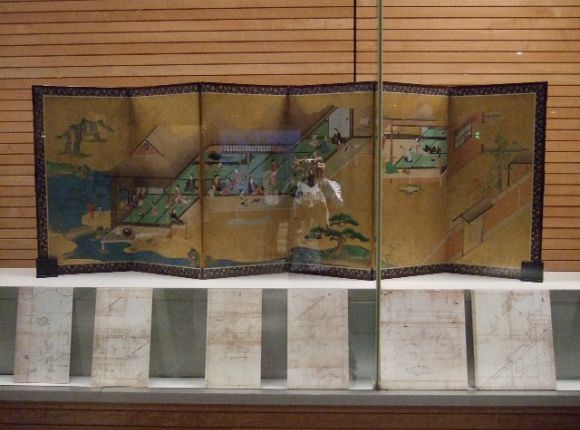
Image Courtesy of: asobi tsuchiya
Ukio-e are Japanese Woodblock Prints that were popular between the 17th and 20th centuries. The word Ukiyo-e was Buddhist in origin and meant “sad world”, but by the 17th century its meaning had changed to “floating world”, and Ukiyo-e became “pictures of the floating world” due to the images depicting a world of transient pleasures and carefree existence. These paintings were often simple posters advertising theater performances and brothels, or idol portraits of popular actors and beautiful tea house girls. However, there were also many landscape paintings animated by the Japanese love of nature. In the 18th century, new techniques were developed which allowed full-color printing. Nowadays, Ukiyo-e represent landscapes, portraits, scenes from history, theater and other subjects. They are always great souvenirs as postcards and pictures.
Daishodo is a shop specialized in Japanese antique books, Ukiyo-e and modern Japanese prints. The shop is located along Shinkyogoku at 604-8045 Enpukujimae-cho, Nakagyo-ku, Kyoto, Japan. They have a large selection of Ukiyo-e, including some from the Edo period and, of course, Kyo-hanga, the Kyoto style woodblock prints. The shop is open from 11:00 until 19:30; it is only closed on Wednesdays. Ukiyo-e can also be found at the Kyoto Handicraft Center and Art Yoshikiri located in Gion at 246 Nakano-cho, Shinmonzen-dori St. Higashiyama-ku, Kyoto. Prices for original 17th to 19th century Ukiyo-e may go up to ¥250,000 ($3086) while modern ones start with ¥2,000 ($25).
Daishodo is a shop specialized in Japanese antique books, Ukiyo-e and modern Japanese prints. The shop is located along Shinkyogoku at 604-8045 Enpukujimae-cho, Nakagyo-ku, Kyoto, Japan. They have a large selection of Ukiyo-e, including some from the Edo period and, of course, Kyo-hanga, the Kyoto style woodblock prints. The shop is open from 11:00 until 19:30; it is only closed on Wednesdays. Ukiyo-e can also be found at the Kyoto Handicraft Center and Art Yoshikiri located in Gion at 246 Nakano-cho, Shinmonzen-dori St. Higashiyama-ku, Kyoto. Prices for original 17th to 19th century Ukiyo-e may go up to ¥250,000 ($3086) while modern ones start with ¥2,000 ($25).
Where to find it:
DaishodoAddress: 274-2 Enpukujimaecho, Nakagyo Ward, Kyoto, 604-8045, Japan
Opening hours: Monday, Thursday-Sunday: 12:00-17:00
Phone: +81 75-221-0685
Website: http://www.kyoto-teramachi.or.jp/shop/w060/index.html
Kyoto Handicraft Center
Address: 17 Shogoin Entomicho, Sakyo Ward, Kyoto, 606-8323, Japan
Operation Hours: 10:00–19:00
Phone: +81 75-761-8001
Website: http://www.kyotohandicraftcenter.com/
E-mail: information@kyotohandicraftcenter.com
Art Yoshikiri
Address: Higashiyama Ward, Kyoto
Opening hours: Tuesday-Sunday: 10:00-17:00
Phone: +81 75-541-2989
Website: http://www.artyoshikiri.jp/
E-mail: shop@artyoshikiri.jp
Buy It on Amazon:
14. Kyoto Damascene Jewelry
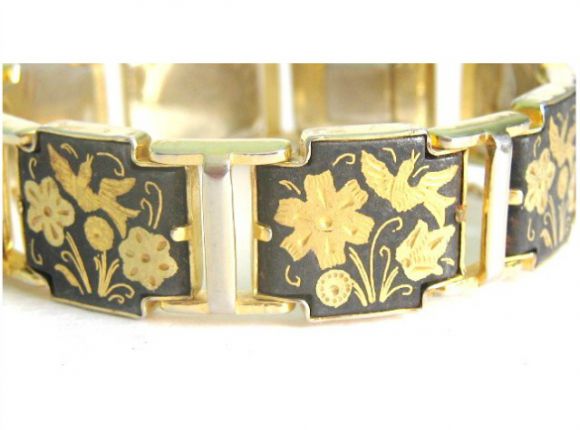
Image Courtesy of: jordenjo
Damascene jewelry is finely handcrafted jewelry with designs composed of gold and silver embedded into base metal, like steel. Damascene-style work is believed to have been practiced by the ancient Egyptians, Greeks and Romans, but it was brought to a high form of art by the craftsmen from Damascus more than 2000 years ago. From there, it got carried along the Silk Road to Japan during the Nara period (710-794). Around the same time, the Moors conquered Spain and brought damascene-style decoration with them. An interesting fact is that the production of damascene jewelry almost disappeared in the Middle East; nowadays, most damascene jewelry articles come either from Toledo, Spain or Kyoto, Japan.
In Japan, damascene has been used to decorate the hilts of weapons. These decorations were very popular during the Edo period (1603-1868), but then swords were banned and the damascene craftsmen turned to various decorative items, including jewelry. The design motifs used in damascene jewelry made in Kyoto typically reflect traditional Japanese subject matter: cherry blossoms and other flowers, such as iris, landscape scenes (often including Mt. Fuji), butterflies, and birds.
Beautiful damascene jewelry can be found on the first floor of the Kyoto Handicraft Center.
In Japan, damascene has been used to decorate the hilts of weapons. These decorations were very popular during the Edo period (1603-1868), but then swords were banned and the damascene craftsmen turned to various decorative items, including jewelry. The design motifs used in damascene jewelry made in Kyoto typically reflect traditional Japanese subject matter: cherry blossoms and other flowers, such as iris, landscape scenes (often including Mt. Fuji), butterflies, and birds.
Beautiful damascene jewelry can be found on the first floor of the Kyoto Handicraft Center.
Where to find it:
Kyoto Handicraft CenterAddress: 17 Shogoin Entomicho, Sakyo Ward, Kyoto, 606-8323, Japan
Opening hours: Daily: 10:00–19:00
Phone: +81 75-761-8001
Website: http://www.kyotohandicraftcenter.com/
E-mail: information@kyotohandicraftcenter.com
15. Kyonui Embroidery
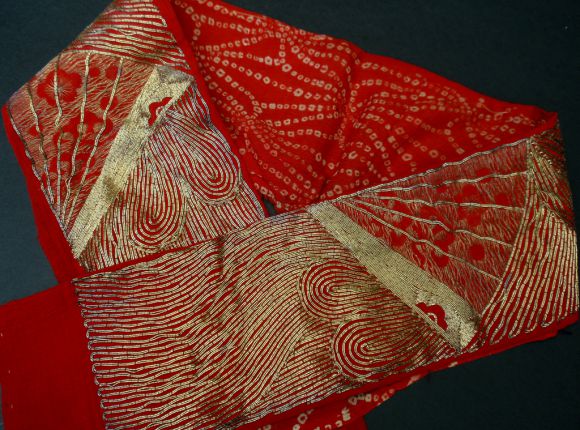
Image Courtesy of: Blue Ruin 1
It is considered that embroidery arrived in Japan via the Silk Road from China and India. At first, Japanese embroidery consisted of mere reproductions of works from Asia, but by the early Heian period, it had evolved into a distinct Japanese style. During the 16th and 17th centuries, embroidery was increasingly used for beautiful kimono designs for which gold and silver threads were largely applied. Eventually, embroidery has become a craft form specific to certain regions. One of them is Kyoto. Kyoto style embroidery is considered to be the finest among all the styles in Japan and was officially recognized as a traditional craft.
Kyonui embroidery can be found at the shop Nuishou Inagaki. The embroidery found here is produced by the resident Kyonui master. There is a great variety of Kyonui style works at this shop, so there is always enough to choose from; you can also have a customized embroidery made for you.
Kyonui embroidery can be found at the shop Nuishou Inagaki. The embroidery found here is produced by the resident Kyonui master. There is a great variety of Kyonui style works at this shop, so there is always enough to choose from; you can also have a customized embroidery made for you.
Where to find it:
Nuishou InagakiAddress: 1-1 Mibumori-machi, Nakagyou-ku, Kyoto, Japan
Phone: +81 75-841-0668
Website: http://www.inagaki-art.jp/
E-mail: kyoto@inagaki-art.jp
16. Manga

Image Courtesy of: Su Yin Khoo
Manga is the Japanese word for comics and print cartoons. In the West, the term "manga" refers to Japanese comics created by Japanese artists in the Japanese language according to the style developed in the late 19th century. Modern manga appeared shortly after World War II and has been increasingly popular both in Japan and the rest of the world. Manga include a broad range of genres, from historical dramas to business and commerce. Nowadays, there are millions of manga fans all over the world. It has become so popular that there's even a Faculty of Manga in Kyoto.
The Kyoto International Manga Museum is equal to heaven for manga aficionados. The museum was open in the former building of a primary school. It has the largest collection of Japanese and some non-Japanese manga ever produced. The main feature of the museum is the Wall of Manga which is actually composed of several walls on two floors. It features thousands of manga books that can be read for free. At the entrance of the museum there is a gift shop packed with collections of manga books and books about manga. The admission fee is ¥800 (around $10). In Kyoto, there is a chain of shops called Comic Shock! selling used manga books along with the new ones. They have a wide selection of manga for all tastes. Manga books cost from ¥150 ($2) to ¥600 ($8).
The Kyoto International Manga Museum is equal to heaven for manga aficionados. The museum was open in the former building of a primary school. It has the largest collection of Japanese and some non-Japanese manga ever produced. The main feature of the museum is the Wall of Manga which is actually composed of several walls on two floors. It features thousands of manga books that can be read for free. At the entrance of the museum there is a gift shop packed with collections of manga books and books about manga. The admission fee is ¥800 (around $10). In Kyoto, there is a chain of shops called Comic Shock! selling used manga books along with the new ones. They have a wide selection of manga for all tastes. Manga books cost from ¥150 ($2) to ¥600 ($8).
Where to find it:
Kyoto International Manga MuseumAddress: 452 Kinbukicho, Nakagyo Ward, Kyoto, 604-0846, Japan
Opening hours: Thursday-Tuesday: 10:00-17:00; Closed on Wednesday
Phone: +81 75-254-7414
Website: http://www.kyotomm.jp/
Comic Shock!
Address: Minami Ward, Higashikujo Nishisannocho
Opening hours: Daily: 10:00-00:00
Phone: +81 75-661-7090
Website: http://www.comicshock.jp/
Buy It on Amazon:
17. Kyoto Handmade Washi Paper
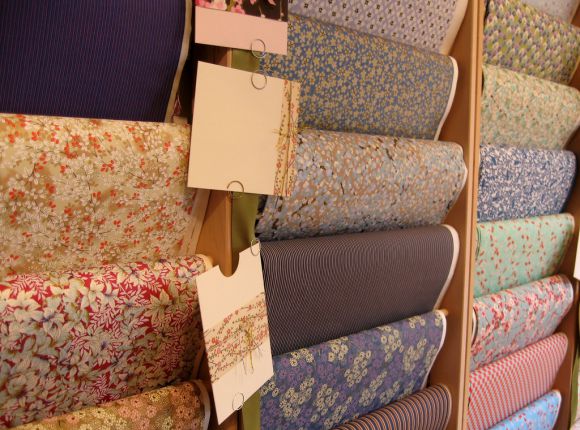
Image Courtesy of: apium
Washi - for more than 1,000 years - has been one of the finest papers in the world in terms of quality and durability. Washi paper is made of fibers from the bark of the gampi tree, mitsumata shrub, or the paper mulberry. It may also be made of bamboo, hemp, rice, and wheat. Washi is produced the same way as ordinary paper, but the process involves less chemicals. The Japanese used and still use washi for all kinds of things: window, door and lantern coverings, wrapping paper to keep kimono dry, candy wrappers, writing paper, art work, and money.
Washi paper and articles made of it can be bought at the Kyoto Handicraft Center or at one of the small shops dealing with Washi paper. Another nice place to get some Washi articles is Suzuki Shofudo. The shop also has a workshop where you can see yourself how the paper articles are made by hand. The prices for washi paper objects start from ¥315 ($4).
Washi paper and articles made of it can be bought at the Kyoto Handicraft Center or at one of the small shops dealing with Washi paper. Another nice place to get some Washi articles is Suzuki Shofudo. The shop also has a workshop where you can see yourself how the paper articles are made by hand. The prices for washi paper objects start from ¥315 ($4).
Where to find it:
Kyoto Handicraft CenterAddress: 17 Shogoin Entomicho, Sakyo Ward, Kyoto, 606-8323, Japan
Opening hours: Daily: 10:00–19:00
Phone: +81 75-761-8001
Website: http://www.kyotohandicraftcenter.com/
E-mail: information@kyotohandicraftcenter.com
Suzuki Shofudo
Address: Nakagyo Ward, 409
Opening hours: 11:00-19:00
Phone: +81 75-231-5003
Website: https://shofudo-shop.jp/
Buy It on Amazon:
18. Geta (Japanese Clogs )
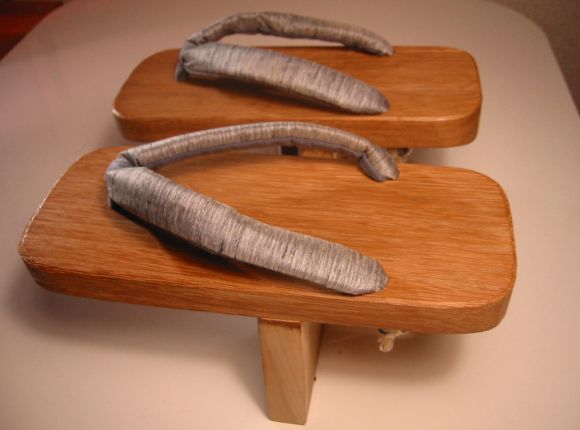.jpg)
Image Courtesy of: yamakk
Geta are a form of traditional Japanese footwear that resemble both, clogs and flip-flops worn with traditional Japanese clothing, such as kimono or yukata. In Japan, they are also worn with Western clothing during summer. Geta are made of one piece of solid wood with two wooden blocks underneath and a fabric thong. There are several styles of Geta differing in shape and design. Geta were the most used type of footwear in Japan before shoes began to be worn.
Traditional Geta can be bought from the Shinkyogoku-dori (Shingyoku Shopping Street) which extends from Sanjo-dori to Shijo-dori. Along this street there are numerous shops selling gifts, so you can also buy other items besides Geta. Another place where you can find Geta is the Kyoto Handicraft Center.
Traditional Geta can be bought from the Shinkyogoku-dori (Shingyoku Shopping Street) which extends from Sanjo-dori to Shijo-dori. Along this street there are numerous shops selling gifts, so you can also buy other items besides Geta. Another place where you can find Geta is the Kyoto Handicraft Center.
Where to find it:
Shingyoku Shopping StreetAddress: Shinkyogoku-dori, Nakagyo-ku, Kyoto, Japan
Kyoto Handicraft Center
Address: 17 Shogoin Entomicho, Sakyo Ward, Kyoto, 606-8323, Japan
Opening hours: Daily: 10:00–19:00
Phone: +81 75-761-8001
Website: http://www.kyotohandicraftcenter.com/
E-mail: information@kyotohandicraftcenter.com
Buy It on Amazon:
Get GPSmyCity App for IOS or Android
You can read offline thousands of travel articles like this one in the "GPSmyCity: Walks in 1K+ Cities" app on Apple App Store or Google Play Store. The apps also offer city offline maps and GPS navigation to guide you to the places featured in the articles.
Walking Tours in Kyoto, Japan
Create Your Own Walk in Kyoto
Creating your own self-guided walk in Kyoto is easy and fun. Choose the city attractions that you want to see and a walk route map will be created just for you. You can even set your hotel as the start point of the walk.
Imperial Kyoto Walking Tour
The former capital of Japan, Kyoto is the city of tradition. During its heyday, Imperial Kyoto was the cultural and political heart of the country. At the heart of its historical landscape, there are several iconic landmarks, each bearing witness to the city's imperial past.
Nijo Castle, an architectural marvel renowned for its elegant design and elaborate gardens, boasts impeccably... view more
Tour Duration: 2 Hour(s)
Travel Distance: 4.1 Km or 2.5 Miles
Nijo Castle, an architectural marvel renowned for its elegant design and elaborate gardens, boasts impeccably... view more
Tour Duration: 2 Hour(s)
Travel Distance: 4.1 Km or 2.5 Miles
Gion District Walking Tour
Famed as one of the most mesmerizing parts of Kyoto, Gion has long been associated with traditional Japanese entertainment, stunning temples, geishas, and local eateries, ideal for whiling away a day in the ancient capital of Japan. This district forms part of the Higashiyama (“Eastern Mountain”) neighborhood.
Among its notable landmarks is the Minamiza Kabuki Theater, a venue where... view more
Tour Duration: 2 Hour(s)
Travel Distance: 2.8 Km or 1.7 Miles
Among its notable landmarks is the Minamiza Kabuki Theater, a venue where... view more
Tour Duration: 2 Hour(s)
Travel Distance: 2.8 Km or 1.7 Miles
Walk on Philosopher's Path
The Philosopher's Path in Kyoto winds its way for about 2 km along the canal that carries water from Lake Biwa to the foothills. Lined with cherry trees, this picturesque walking trail was named in honor of the famed Japanese philosopher, Nishida Kitaro, who used to walk here as a part of his daily meditation in the first half of the 20th century. A popular spot for both locals and tourists,... view more
Tour Duration: 2 Hour(s)
Travel Distance: 2.6 Km or 1.6 Miles
Tour Duration: 2 Hour(s)
Travel Distance: 2.6 Km or 1.6 Miles


























